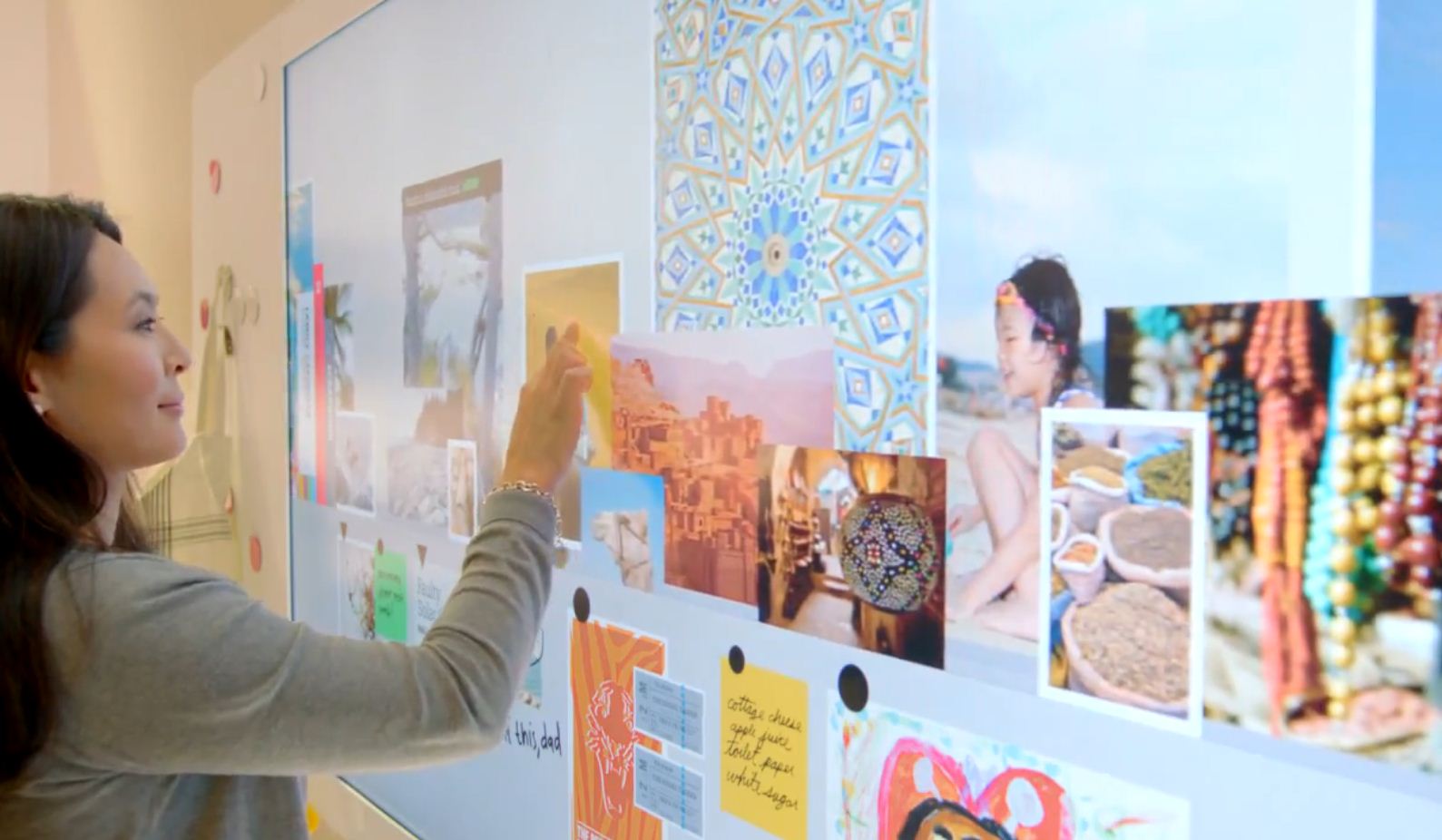Microsoft: Secrets Behind The Envisioning Center Doors
by Laurie Sullivan, Staff Writer @lauriesullivan, November 11, 2016
Envision a home where glass in kitchen cabinets, on walls and in picture frames doubles as video phones. Where blackboards keep a running tally on the future plans of those living in the household, and smart shelves with sensors tell you why your basil in the potted plant is dying or thriving.

Take a walk into the future through the eyes of Microsoft. It felt a little like being at Disneyland with all the real-life animation and walls turning into full-sensory video telephone systems that provide insight into far-off lands, but in reality it’s pieces of technology either readily available, on the drawing board, or in the minds of researchers that Microsoft engineers created and experiment with for use in a variety of applications. Microsoft calls the space the Envisioning Center. I had an opportunity to take a tour Thursday.
The center — although no photos are allowed — offers a clear picture of how Microsoft will integrate the work from across its business divisions, such as advertising, chatbots and cloud services with ERP and CRM business tools, and Xbox and HoloLens. It’s also clear how data can play a role for advertisers and how the company will evolve to lead the next evolution of devices and services.< ?XML:NAMESPACE PREFIX = “O” />< ?xml:namespace prefix = "o" />
The Envisioning Center is a place for Microsoft to showcase its technology and its view of the future for home and office spaces. The space in various forms has been around for between 15 and 20 years. I visited the space in the early 2000s, when the focus was on radio frequency identification technology and near-field communication sensors that tallied up your purchases as you walked in the front door with packages after shopping for the day.
The sensors would identify the products and enter each as a line item in a database, so the home owner would have a running inventory of the items — clothing to kitchen items and furniture to electronics — in the home. At that time retailers were tagging everything with RFID chips and focusing on automating inventory systems. Each home would have a server rather than connecting to the cloud.
Fast-forward 15 years and the focus turns to cloud services, sensors and video, along with a whole bunch of data that advertisers will have an option to use to target. That’s the next phase in advertising.
MediaPost.com: Search Marketing Daily
(58)










